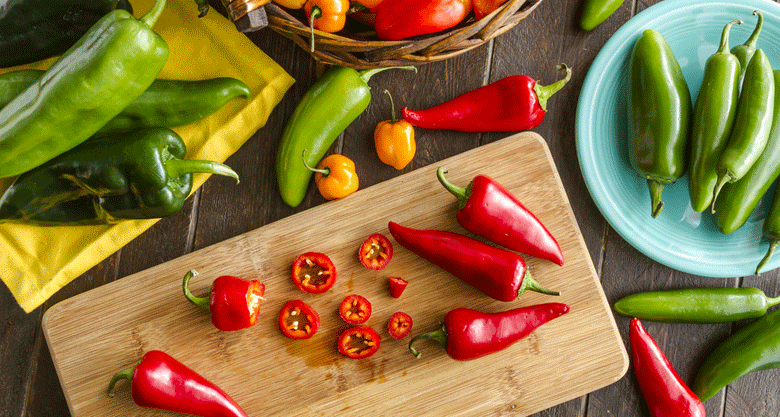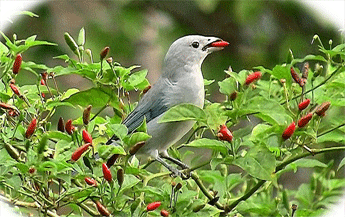
Read all about the Chilli. . Exploring the history and other aspects of the Chilli is fascinating. When considering it has its origins in Central America and has found its way to almost every corner of the globe, it is truly amazing. After being brought to Europe by Christopher Columbus, the Chillies' rise to fame has been meteoric. It quickly travelled to Asia, Africa and throughout Europe to become the world's most favourite spice. Chillies are enjoyed by millions of people every day. What's more, this trend hasn't ended yet. Chillies are gaining in popularity all the time. In this section, find out interesting facts about Chillies, which varieties are the hottest, and why Chillies are hot.

Join the journey
Learning about Chillies is terrific. Starting with the history of Chillies (which in itself is really interesting), finding out how to grow them, how they are used in cuisine, making food with Chillies and many other things) is fascinating. The journey into Chillies takes you to all parts of the globe, introduces you to new cultures, the history of these cultures, new cooking styles, and you also get to learn more about how Chillies became what they are today. There is never a dull moment. It is undoubtedly captivating and certainly worth being part of.
One of the keys to joining this journey is going back to nature.
Chillies and nature
It is only birds and humans that eat Chillies. Humans are the only mammals to eat pungent Chillies. Some mammals, like rodents, readily eat milder varieties, but won't touch the hotter Chillies. They are put off by the burning affect it has on them. Conversely, one of the reason humans eat Chillies is precisely for this burning effect. The Chillies Capsaicin content is what attracts us to eat them. We not only eat Chillies for the favour and nutrition they provide, but also because they make us feel good!
Birds, on the other hand, are not affected by Capsaicin at all. It is thought that this is because they don't have many taste receptors. Humans have about ten thousand of these receptors, while birds have far fewer. Chickens, for example, only have twenty-four and pigeons thirty-seven
All this said, nature never intended humans to like Chillies. We are, after all, mammals, and aren't particularly good at getting around. Chillies want their seeds spread as far and wide as possible. They far prefer birds to do this. Chillis have thus evolved so that they attract birds by their colour. The birds eat the Chillies as a meal, and these then pass through the birds digestive tract. The only part of the Chilli that does not get digested is its seeds. And this is where the magic happens. After eating Chillies, birds fly for many miles before depositing these seeds in their droppings on the ground. The seeds have now not only been well dispersed, but also have an excellent chance of germinating . They have after all been delivered with a healthy dose of fertilizer,
Final thought
When considering that humans and birds are pretty numerous, to say that nature did not intend us to like Chillies may be a flawed statement. We may not be so good at getting them into far away places, but we certainly do our bit in protecting their existence. We grow them in their millions of tonnes, after all! With so many Chillies being grown and eaten, they aren’t going anywhere quickly soon. Nature has a way of making the fittest survive. Chillies have indeed found another way of surviving extremely well.
Image credit
Alex Popovkin, Bahia, Brazil/ CC BY 2.0 / via Wikimedia Commons



